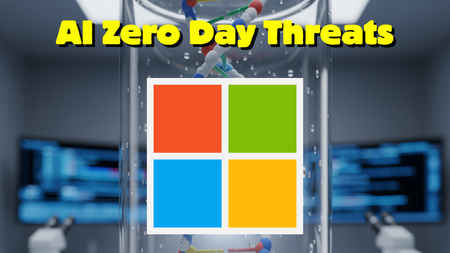Business Impact: AI just found a “zero‑day” in DNA screening
Microsoft researchers report that AI can identify previously unknown ways to evade DNA‑sequence purchasing safeguards-the filters meant to stop dangerous sequences from being ordered. First reported by MIT Technology Review’s The Download, the finding elevates AI from a theoretical to a demonstrated threat in biosecurity workflows. For life‑science companies, synthesis providers, cloud platforms, and insurers, this is a material risk: it combines AI’s generative capabilities with supply‑chain exposure and potential regulatory scrutiny, creating immediate implications for governance, vendor management, and incident response.
Executive Summary
- AI can design practical bypasses to DNA screening, turning static controls into moving targets and raising the bar for compliance and defense.
- Vendors and buyers of DNA sequences face supply‑chain liability; expect tighter purchasing checks, attestations, and audits across the bioeconomy.
- Boards should treat biosecurity like cybersecurity: continuous testing, red‑teaming, model risk management, and crisis playbooks are now table stakes.
Market Context: A shifting defense landscape
DNA synthesis providers have long screened orders to spot hazardous sequences, guided by industry consortia and evolving government recommendations. Those systems were designed around known threats and pattern matching. Microsoft’s result shows AI can synthesize novel exploits against these protections-akin to a “zero‑day” in software security-forcing a transition from static rule sets to adaptive, intelligence‑driven defenses.

This comes as AI proliferation lowers the cost of bio‑design, regulators signal tougher expectations for safety and traceability, and capital flows into AI‑biotech platforms. The competitive edge will accrue to firms that can prove trustworthy pipelines—secure procurement, robust screening, monitoring, and auditable controls—without throttling R&D velocity. Expect buyers to favor vendors with third‑party assurance, continuous red‑teaming, and clear incident reporting channels.

Opportunity Analysis: Where advantage shifts
- Biotech and pharma: Differentiate with “secure‑by‑design” R&D operations—segmented ordering workflows, dual‑control approvals for sensitive sequences, and documented screening outcomes integrated into quality systems.
- DNA synthesis providers: Move beyond static filters to adaptive, layered screening with AI‑assisted detection, provenance tracking, and rapid rules updates—backed by independent audits and customer SLAs.
- AI and cloud platforms: Package biosecurity safety evaluations, model governance, and red‑team services as offerings; partner with synthesis vendors to create shared threat intelligence and response protocols.
- Insurers and reinsurers: Develop coverage tied to verifiable biosecurity controls, creating incentives and market standards while expanding insurability for AI‑enabled bio risks.
Action Items: Immediate steps for strategic advantage
- Convene a cross‑functional biosecurity task force (R&D, IT/AI, legal, compliance, procurement) to map DNA ordering and approval workflows within 30 days.
- Audit vendors: Require synthesis providers to attest to continuous screening updates, third‑party audits, and incident notification timelines; add these to contracts and SLAs.
- Institute dual‑control for sensitive sequence purchases and maintain immutable logs for regulatory and insurer review.
- Commission an authorized biosecurity red‑team assessment of your screening and procurement processes—focused on governance, not methods disclosure—and remediate gaps on a defined timeline.
- Update risk registers and board reporting to include AI‑enabled bio threats; align incident response with regulatory contacts and public‑communications plans.
- Budget for adaptive screening and monitoring tools in the next planning cycle; pilot with one business unit and scale based on measurable control efficacy.
Leave a Reply